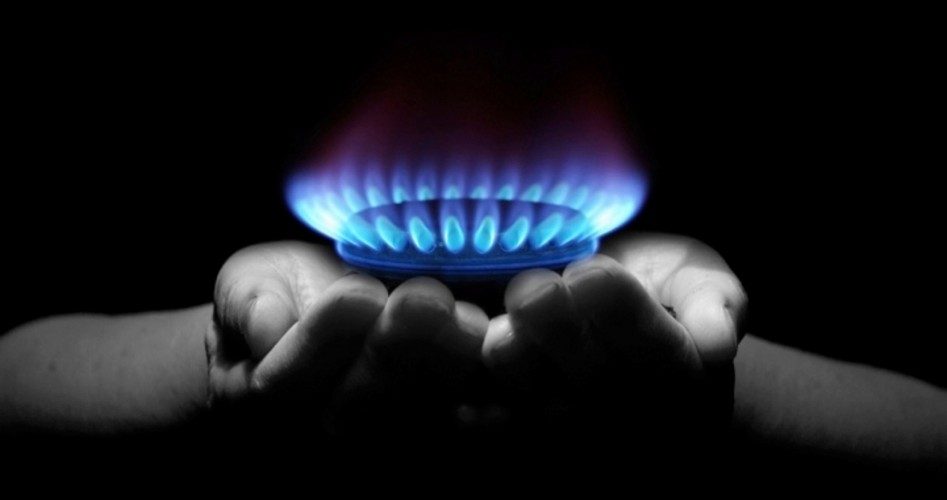
One of Donald Trump’s key promises while running for president was that, if elected, he would end President Obama’s “war on coal.” On Wednesday the head of the Environmental Protection Agency (EPA) did just that. EPA Administrator Andrew Wheeler finalized his agency’s plans to replace Obama’s “Clean Power Plan” with Trump’s “Affordable Clean Energy” plan.
Wheeler referred obliquely to Obama’s “war on coal” by likening it to the Green New Deal: “The contrast between our approach and the Green New Deal, or plans like it [i.e., Obama’s “Clean Power Plan”], couldn’t be clearer. Rather than Washington telling Americans what type of energy they can use, or how they can travel, or even what they eat, we are working cooperatively with the states to prove affordable, dependable, and diverse supplies of energy that continues to get cleaner and more efficient.”
President Trump added: “I’m getting rid of some of these ridiculous rules and regulations, which are killing our companies, our states, and our jobs. Just today we announced our new affordable clean energy proposal that will help coal-fired plants and save consumers — you, me, everybody — billions and billions of dollars.”
In essence, Trump’s new plan gives back to the states the power to make energy regulations without federal oversight or mandates.
His new plan is likely to have little impact on the coal industry, or on clean air, but the sea change in the role of the federal government in mandating rules for the states cannot be overstated.
The U.S. coal industry hasn’t built a new coal-fired plant in decades, and has closed more than a quarter of the country’s existing plants in favor of the vastly more efficient, lower-emissions-emitting natural gas fired plants. And in some areas, new plants are being supplemented with wind power, thanks to federal tax credits that make the investment in them viable.
Back in 2015, President Obama launched his “Clean Power Plan” initiative that would have required individual states to meet specific standards and targets with respect to the reduction of carbon dioxide emissions. If a state failed to meet those targets, Obama’s mandate would allow the EPA to come in and enforce its own plan on that state.
Happily, Obama’s plan never saw the light of day, thanks to extraordinary pushback from the states and a ruling from the Supreme Court that put it on hold. But during the hiatus, market forces were not only providing cheap energy, but cleaner air as well. Obama’s plan was predicated on at least two underlying assumptions: 1) the states couldn’t be trusted to meet his goals; and 2) climate-change risks were so great that the federal government was the only instrument with enough power ignoring the Constitution in the process to force the states to comply. Under Trump’s new law, both of those assumptions are being rebutted.
The power industry is, thanks to market forces that include the declining cost of natural gas (thanks to another relatively unregulated energy sector, fracking), closing coal-fired plants in favor of gas-fired plants. In 2018, U.S. coal consumption reached a 39-year low of 687 million tons and it’s expected to drop further this year to 600 million tons and to 567 million tons in 2020, according to the U.S. Energy Information Administration (EIA).
Scientific American admitted that “coal’s decline, coupled with a significant injection of new wind and solar, means [that] America is already on track to meet the carbon [emissions] cuts originally envisioned by [Obama’s] Clean Power Plan: a 32 percent reduction from 2005 levels by 2030.” The EPA projects that CO2 emissions will be reduced by a third by 2030, if not sooner.
EPA chief Wheeler noted that, from 2006 to 2017, the United States reduced its energy-related CO2 emissions by 14 percent.
Imagine that: The country’s energy-generation industry was already on track to accomplish what the Obama administration’s mandates were going to force the states to do.
The New York Times complained that Trump’s new plan “largely gives states [back] the authority to decide how far to scale back emissions, or not to do it at all, [while] significantly reduces the federal government’s role in setting standards.” Added the Times: “The new rule, which is expected to come into effect within 30 days, assumes that the forces of the market will guide the country to a future of cleaner energy by naturally phasing out coal over time. It imposes only modest requirements on coal plants.”
The Times quoted Jody Freeman, a professor of environmental law at Harvard (and former legal counsel in the Obama administration), who called Trump’s new plan a “retrenchment,” rather than a victory, for limited government: “No matter how you slice it, this is a dramatic retrenchment. It’s not that they’re [the Trump administration] doing very small, modest steps to reduce emissions. It’s that they’re not creating momentum to substitute renewables and substitute natural gas for coal.”
Trump’s new “Affordable Clean Energy Plan” is no retrenchment, but an advance in the cause of economic freedom. Thanks to the limitation of the federal government, natural gas is already replacing coal, and the air is getting cleaner. The EPA is now taking the back seat while states are now driving the bus. That’s the real victory embedded in the EPA’s announcement.
An Ivy League graduate and former investment advisor, Bob is a regular contributor to The New American, writing primarily on economics and politics. He can be reached at [email protected].



